ASUS Fonepad Note 6 Review
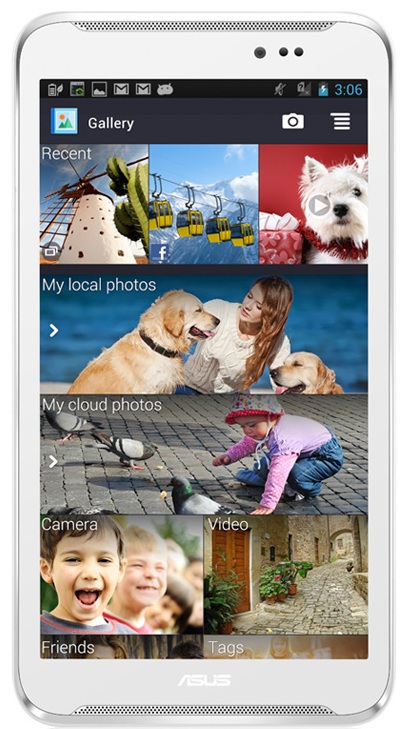
Tablets with a screen diagonal of 6 inches, many refer to more smartphones. However, ASUS itself is positioning Fonepad Note 6 as a tablet, and I am inclined to agree with this: after all, the device is no longer perceived as a smartphone, despite the presence of a cellular module. This classification is also facilitated by a screen with an “adult” resolution of 1920x1080.
Specifications
OS : Android TM 4.2
Screen : 6 "LED Backlight Full HD (1920x1080)
Processor : Intel® Atom ™ Z2580 Dual-Core, 2.0 GHz
RAM : 2 GB
Memory :
16 GB eMMC
5 GB ASUS Webstorage Space (for life)
Cellular :
DC-HSPA +: reception: 42 Mbit / s, return: 5.76 Mbit / s
3G: WCDMA 700/850/900/1900/2100
2G: EDGE / GSM
Wireless :
WLAN802.11 a / b / g / n
Bluetooth V3.0 + EDR
Miracast
Camera :
1.2 megapixel front (video recording up to 720p)
8 megapixel main, with autofocus (video recording up to 1080p)
Sound : SonicMaster stereo speakers
Connectors :
1 × 2-in-1 audio (headphone / microphone)
1 × Micro SD card reader up to 64 GB
1 × Micro USB
1 x Micro SIM
Sensors :
Motion Sensor
Accelerometer
Light sensor
Compass
Gyroscope
Distance sensor
Battery : 15 W * hour, Li-Po
Standby time : 490/34 hours (2G / 3G)
Talk time : 23 hours (2G)
Navigation : AGPS, GLONASS
Dimensions and weight : 164.8 x 88.8 x 10.3 mm (Length x Width x Thickness), 210 g.
')

Complete set and appearance
In a fat box is only a smartphone and a compact charger with a USB cable. The smartphone comes in two colors: black and pearl-white, for testing came the version in the white version.
Despite the positioning of the Fonepad Note 6 as a tablet, the front side of it is smartly smart, thanks to a silver frame around the perimeter of the device and the silver nets of the stereo speakers above and below.



The body is made of a hard, smooth, high-quality plastic that barely noticeably sparkles in the light. In the upper part there is a camera inserted in a silver frame. In the lower left corner is a slot with an active stylus.

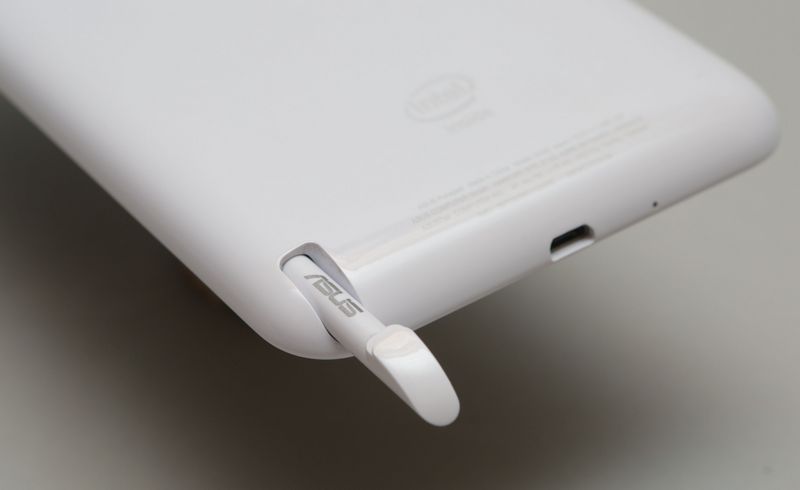

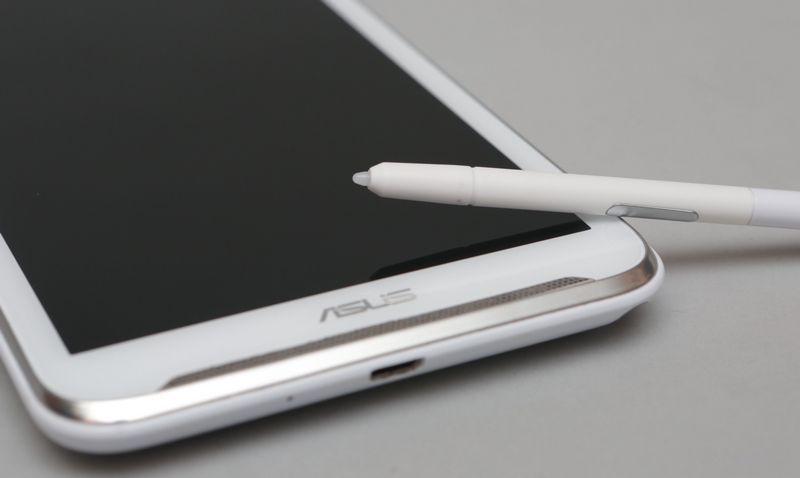
At the top there is an audio jack.

On the left side are silver buttons on and adjust the sound.

On the right side there is a large end cap under which the microSD sockets (supports cards up to 64 GB) and microSIM are hidden.

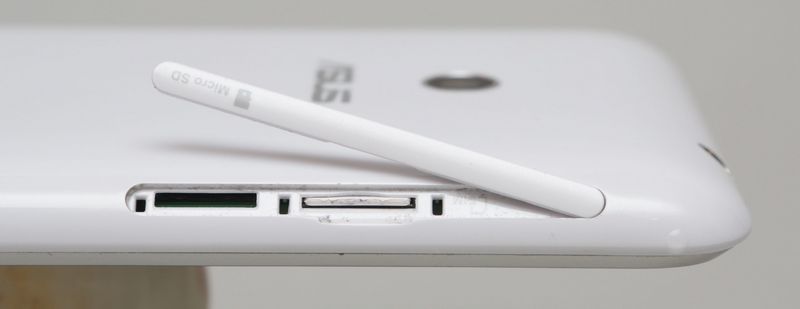
At the bottom is a microUSB jack and a microphone.

The body of the device on a tablet thick, rounded, well in the hand. The six-inch screen allows you to control the device with one hand, but, according to impressions, this method is already at the bottom of comfort - the size of the tablet affects.
Screen
Made with SuperIPS + technology with a resolution of 1920x1080, the Fonepad Note 6 screen has a physical pixel density of 336 ppi. This ensures perfect smoothness and sharpness of the image, along with excellent color rendering and wide viewing angles. However, if for some reason you are not satisfied with the default color rendition, you can adjust the color temperature, hue and saturation of the image using the proprietary utility ASUS Splendid.
Sound
Here, as in all devices from ASUS, technology is used SonicMaster. Fonepad Note 6 is equipped with stereo speakers located above and below the device (in portrait orientation). The sound quality when listening through the speakers is good, some lacking low frequencies. When using headphones, the situation changes a lot for the better, the sound is balanced, with slightly overestimated middle frequencies.
cellular
The tablet is equipped with a cellular module with 3G support. The device confidently holds the network in places with poor cellular coverage. When using the mobile 3G Internet, the best rates of speed were as follows:
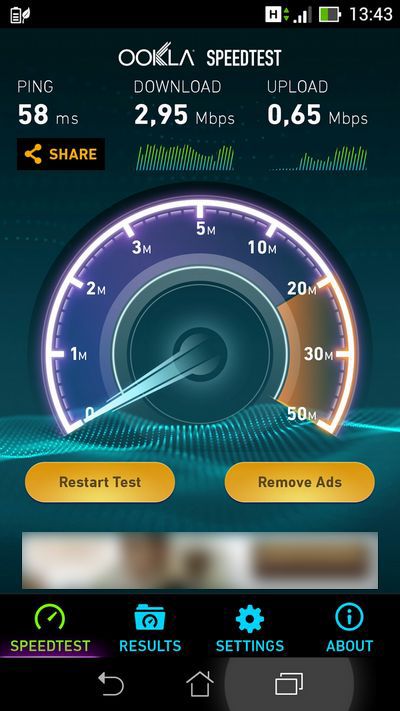
Stylus
ASUS Fonepad Note 6 is equipped with an active stylus, hidden in the lower right corner, when viewed from the front. The stylus is quite thick, it is comfortable to hold, fingers do not get tired. When you remove the stylus, the device automatically unlocks and runs the ASUS SuperNote application. And it opens on an additionally created virtual desktop, marked not just with a dot, but with the stylus icon.


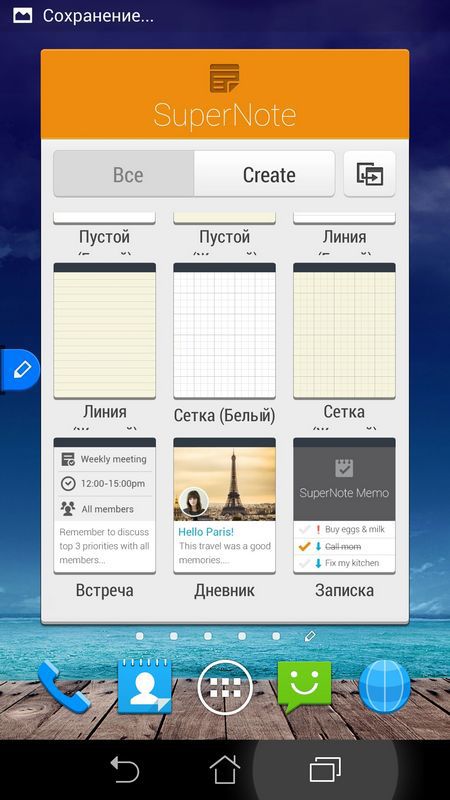
In SuperNote, you can create different types of recordings, from simple notes to complex drawings, and even reminders of events. Text can be saved either in handwritten or text form by typing on the virtual keyboard or by turning on the recognition mode. The quality and speed of recognition is very good, the percentage of errors with my crooked handwriting was surprisingly small. The stylus is sensitive to pressure, the thickness of the line increases. Using the button on the stylus, you can also select a fragment of the screen and save it as a screenshot, send to another device or translate from a foreign language. As an example, I cite my own handwriting, which the device could recognize:

Pay attention to the small blue label on the left, which appears when you pull out the stylus. If you pull it, it expands the grid on the whole screen, on which you can write / draw with the stylus or finger. You can customize the thickness, color and shape of the line over a wide range, as well as choose automatic recognition of simple geometric shapes. Layers are supported. When closing, you will be prompted to save the result as a picture.
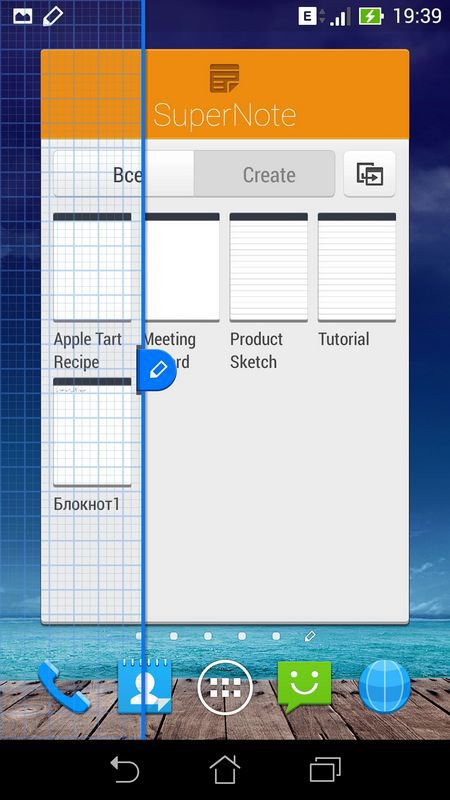
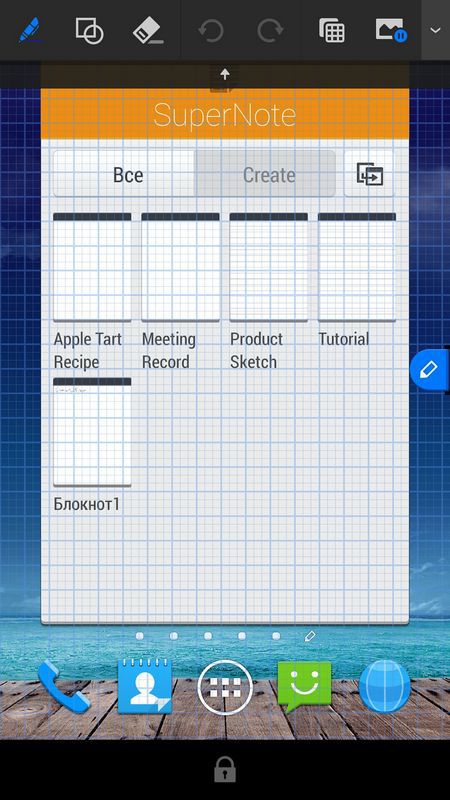
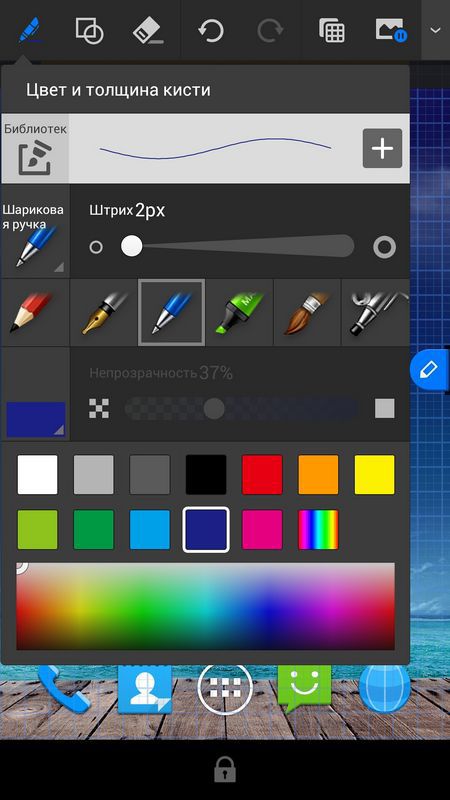

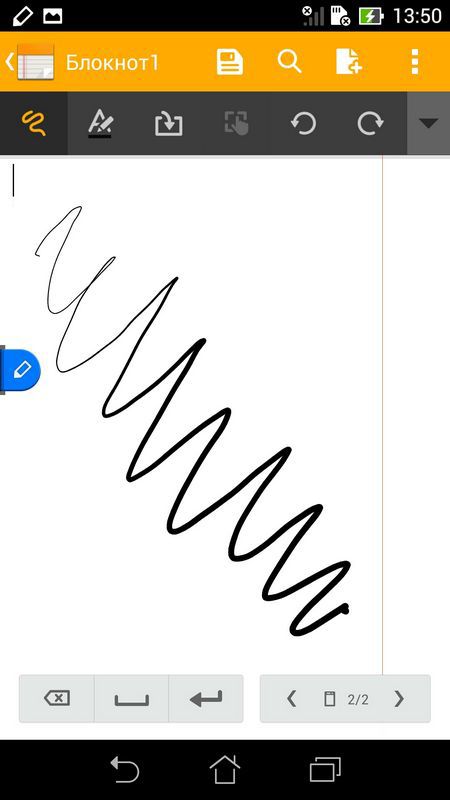

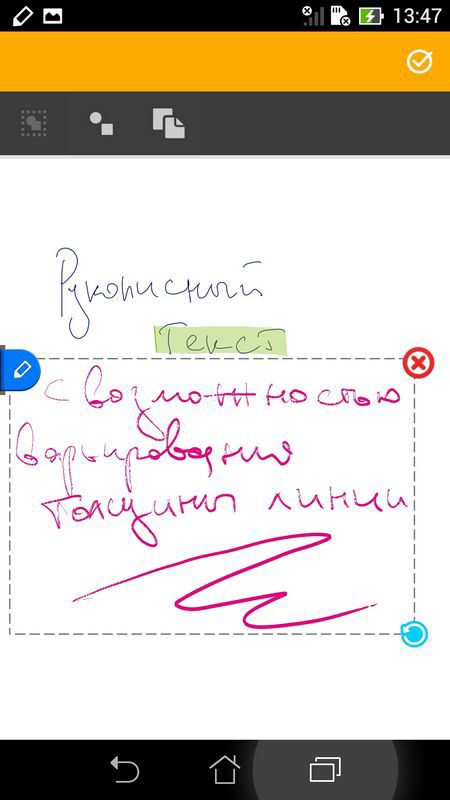
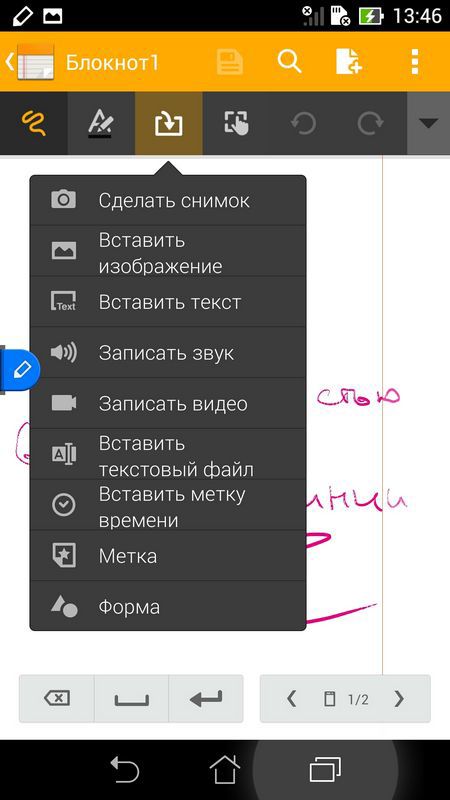
When you remove the stylus in the slot SuperNote application automatically closes and the control panel is unlocked. If you forget to insert the stylus, then every 5 minutes a reminder will be displayed that the stylus is not in the slot. This and a number of other features can be disabled.



By the way, even if you turn off the sound alert when removing / installing, the vibration alert does not turn off.
The function of creating cropes with the stylus works as follows: by pressing and holding the stylus button, you draw a diagonal of the selection rectangle on the screen. Then release the button, and the selected area is saved.

If you need to select a free-form area, you first need to click the Pause button in the toolbar. Then you outline an area of interest on the screen (with the stylus button held down), and after closing the outline (it turns blue), release the button. The selected area is saved as a picture.




Software
In addition to SuperNote, Fonepad Note 6 comes with a proprietary My Library reader, a calendar, a mail manager, and a very convenient automatic dictionary-translator Instant Dictionary. The rest of the set of applications is standard.
Camera
The main camera of the device has an 8Mp matrix. There is autofocus and the ability to record FullHD-video, but there is no flash. The picture quality is satisfactory, the camera of stars from the sky is not enough.





Performance
ASUS Fonepad Note 6 showed quite good performance in benchmarks:


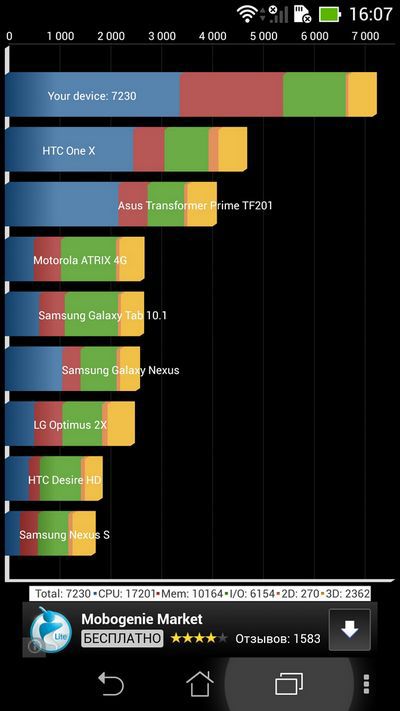


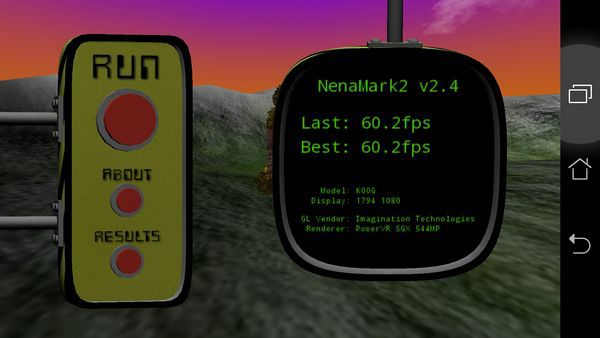
During testing, there were no brakes in working with "heavy" applications and games, the download was fast, applications switched instantly.
Duration of work
Surfing the Internet via WiFi, with periodic video views on Youtube and listening to background music, with a screen brightness of 30%: 8 hours 30 minutes.
View FullHD (1920 * 1200) movies with a screen brightness of 30%: 6 hours and 45 minutes.

I would say, the tablet showed a mediocre result on battery life.
Conclusion
ASUS Fonepad Note 6 has a number of undoubted advantages: an excellent screen with FullHD-resolution, an active stylus, a cellular communication module and excellent performance. At the same time, the device does not support operation in 4G networks. Being a kind of border, transitional device between smartphones and tablets, ASUS Fonepad Note 6 at the same time competes on equal terms with 7-inch tablets, at the same time being comparable in compactness with large smartphones. This is a great option for those who are too small screen smartphone, but at the same time larger tablets are already too large and inconvenient.
Recommended retail price: 15,990 rubles.
Source: https://habr.com/ru/post/211657/
All Articles